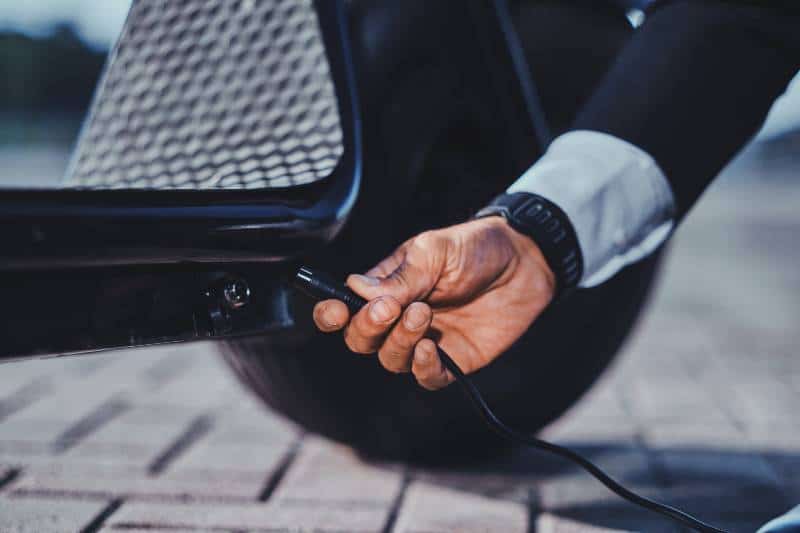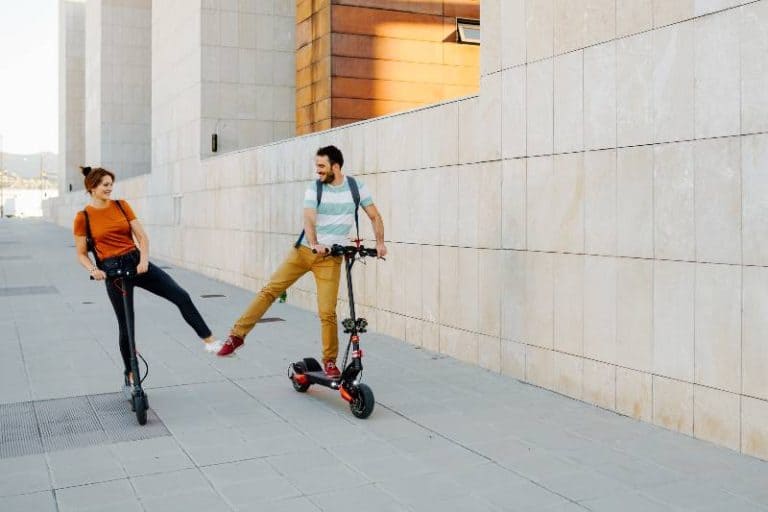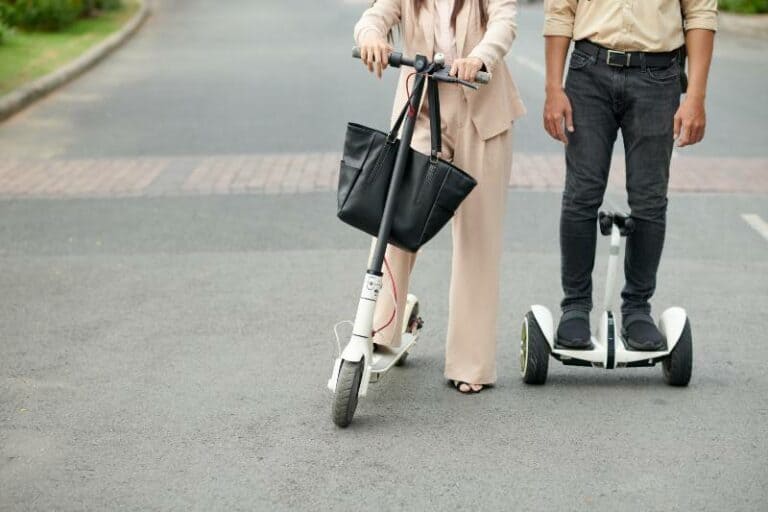What Does It Really Cost to Charge Your E-Scooter?
Ever been tempted to purchase an electric scooter for your daily commuting needs but stopped short after considering the cost of charging it? If that sounds like you, then this blog post is definitely for you! In just a few paragraphs we’ll break down all the costs associated with charging an electric scooter and show you exactly what is the electric scooter charging cost. So let’s not waste any time – read on to find out more!
In the US, electric scooter charging costs varies based on their capacity (if it’s low capacity electric scooter or high capacity electric scooter) It costs 2 cents to charge a low-capacity scooter, 4 cents to charge the most commonly used scooter, and 12 cents to charge a mid-capacity electric scooter on average.
Key Takeaways
- The cost to charge an electric scooter is influenced by factors such as the scooter model, local electricity rates, and charging frequency.
- Although electric scooters require an upfront investment, their operational and charging costs tend to be lower compared to traditional vehicles, making them an economical choice for many individuals.
- Users can reduce their electric scooter’s charging costs through strategies such as efficient use, proper maintenance, and careful selection of scooter models.

II. Understanding Electric Scooter Charging
Electric scooters, like other electric vehicles, operate on the principles of electric motor propulsion, powered by an onboard rechargeable battery. These cutting-edge, environmentally friendly machines are simple yet remarkably sophisticated in their functionality.
At the heart of an electric scooter is its electric motor. This motor is an ingenious device that can convert electrical energy, stored in the battery, into mechanical energy. Unlike traditional combustion engines, which burn fuel to generate the force required to move the vehicle, the electric motor uses magnetic fields and current-carrying conductors to create rotational force.
When the electric scooter is switched on, the battery, which is the primary source of power, begins supplying electricity to the motor. The battery sends direct current (DC) power to the motor. In most cases, the electric scooter uses a specific kind of motor called a brushless DC motor. This type of motor is especially efficient, and reliable, and requires very little maintenance.
The motor’s operation relies on basic principles of electromagnetism. Essentially, the electric current passing through the motor creates a magnetic field, which in turn creates a force in the form of rotation. This force, or torque, is then transferred to the scooter’s wheels via the drive chain, propelling the scooter forward.
A crucial component that plays a vital role in this process is the controller. The controller acts as the brain of the electric scooter, adjusting and controlling the amount of electricity that flows from the battery to the motor. It’s also responsible for converting DC from the battery to AC for the motor to use. Through the controller, the rider can manage the speed and acceleration of the scooter by manipulating the throttle.
Charging Requirements of Electric Scooters
Just like how a mobile phone requires a battery recharge after a day of use, an electric scooter also needs to be charged periodically. The battery in an electric scooter is a crucial component that needs to be maintained and charged properly to ensure the longevity of the scooter and its performance.
The first thing to understand about charging an electric scooter is the type of battery it uses. Most modern electric scooters use lithium-ion batteries because of their high energy density, quick charging times, and longer lifespan. The battery’s capacity, often measured in watt-hours (Wh), determines how far you can travel on a single charge.
The process of charging an electric scooter is quite straightforward. You will need a compatible charger for your scooter, which usually comes with the scooter when you buy it. The charger takes in AC power from your home’s electricity supply and converts it into the appropriate DC voltage for your scooter’s battery.
Electric scooter chargers also typically have built-in safeguards to protect against overcharging. Once the battery is fully charged, the charger will automatically stop the current supply, reducing the risk of damaging the battery.
Charging times vary based on the size of the battery and the power of the charger. For example, a typical electric scooter with a 250Wh battery may take around 3-4 hours to fully charge using a standard charger. High-capacity batteries or slow chargers will naturally take more time.
One important factor to keep in mind while charging is not to let the battery completely discharge before you recharge it. Lithium-ion batteries have the best lifespan when they’re kept between 20% and 80% charge. So, it’s best to charge your scooter regularly, even if you haven’t used up all its battery life.
Finally, it’s crucial to pay attention to the manufacturer’s instructions regarding the charging process. This can help prevent any mishaps and ensures the battery’s longevity. For example, some manufacturers may advise removing the battery from the scooter for charging, while others may advise against it.
Factors Influencing the Cost of Charging an Electric Scooter
Power Consumption of Scooter Model
The model of an electric scooter you have significantly influences the cost of charging it. Different scooter models have different battery capacities, motor powers, and energy efficiencies, all of which contribute to the amount of power they consume.
The battery capacity, usually measured in watt-hours (Wh), indicates the amount of electricity that a battery can store. Scooters with larger battery capacities will require more power to charge fully, hence increasing the cost. For instance, charging a scooter with a 500Wh battery will typically consume twice the electricity (and thus cost twice as much) as charging a scooter with a 250Wh battery, assuming all other factors are equal.
The efficiency of the motor and other electrical systems on the scooter can also impact power consumption. More efficient systems use less electricity to achieve the same performance, which can reduce the cost of charging. However, these efficiencies can be hard to quantify without specific data from the manufacturer or third-party tests.
Local Electricity Rates
Your local electricity rates are another major factor that influences the cost of charging an electric scooter. These rates can vary widely depending on your location and the local utility company’s pricing structure.
Electricity is typically billed in kilowatt-hours (kWh). In some regions, you may pay the same rate for electricity regardless of when you use it. In others, you may be on a time-of-use rate, where the cost per kWh varies based on the time of day. In these cases, you could save money by charging your scooter during off-peak hours when electricity rates are lower.
To calculate the cost of charging your scooter, you would multiply the scooter’s battery capacity in kWh by your local electricity rate. For example, if your scooter has a 0.5kWh (500Wh) battery and your local rate is $0.10 per kWh, it would cost around $0.05 to charge it from empty to full.
Charging Frequency and Duration
How often and how long you charge your electric scooter can also affect your overall charging costs. If you frequently deplete and recharge your scooter’s battery, you’ll naturally use more electricity and incur higher costs than if you only occasionally charge it.
However, it’s worth noting that best practices for battery longevity can influence this cost factor. As mentioned earlier, it’s often recommended to keep lithium-ion batteries (common in electric scooters) between 20% and 80% charge. Charging your scooter little and often within this range can help the battery last longer, even though it might increase your total power usage slightly.
The charging duration can also indirectly affect costs in terms of the type of charger you use. Standard chargers that come with most scooters are relatively slow but energy-efficient. Fast chargers, on the other hand, can charge your scooter more quickly but often consume more power, which could increase costs.
Many factors can influence the cost of charging an electric scooter, including the scooter model’s power consumption, your local electricity rates, and your charging habits. By understanding these factors, you can make more informed decisions to balance performance, cost, and longevity when using and charging your electric scooter.
Step-by-Step Guide to Calculating Charging Cost
Calculating Power Consumption
- Identify the Battery Capacity of Your E-Scooter: The first thing you need to do is to determine your scooter’s battery capacity, which is usually represented in ampere-hours (Ah) or watt-hours (Wh). You’ll typically find this information in your scooter’s manual or on the manufacturer’s website. For the sake of our example, let’s say you have a scooter with a battery capacity of 15Ah and it operates at 36V.
- Convert Battery Capacity to Watt-hours (if necessary): If your scooter’s battery capacity is presented in Ah, you’ll need to convert it to Wh. This can be done by multiplying the Ah rating by the voltage (V) of your e-scooter. In our example, the conversion would look like this: 15Ah * 36V = 540Wh.
- Factor in Charging Efficiency: It’s important to understand that the charging process is not 100% efficient. Some power is lost due to factors such as heat dissipation. A generally accepted average charging efficiency for e-scooters is about 85%. To calculate the actual power consumption from your wall socket, you would divide the battery capacity by the charging efficiency (expressed as a decimal). So, using our example, the calculation would look like this: 540Wh / 0.85 = approximately 635Wh, or 0.635 kilowatt-hours (kWh), since utility companies bill electricity usage in kWh.
Estimating Electricity Cost per Charge
- Find Out Your Electricity Rate: The next step is to determine your electricity rate, which you can usually find on your electricity bill or by contacting your utility company directly. This rate is typically expressed in cents per kilowatt-hour. For our ongoing example, let’s say your rate is 13 cents per kWh.
- Calculate the Cost of a Single Charge: Now that you have your electricity consumption in kWh and your electricity rate, you can estimate the cost of a single charge. You do this by multiplying the power consumption of your e-scooter by your electricity rate. Continuing with our example, the calculation would be: 0.635 kWh * $0.13/kWh = approximately $0.08255. So, each charge would cost about 8.3 cents.
Determining Average Monthly Cost
- Estimate Your Monthly Usage: The final step in calculating your scooter’s charging cost is to estimate how often you charge your scooter in a month. The frequency of charges can vary greatly depending on your personal usage. If you use your e-scooter daily and charge it fully every day, then you might be charging it around 30 times per month.
- Calculate the Monthly Charging Cost: Finally, you can calculate the average monthly cost by multiplying the cost per charge by the estimated number of charges in a month. Using the figures from our example: $0.08255 per charge * 30 charges = $2.4765. So, on average, the charging cost for your e-scooter would be around $2.48 per month.
Please remember that this is a simplified calculation and actual costs can vary based on numerous factors such as your e-scooter’s specific efficiency, the precise cost of electricity in your area, and your personal usage habits.
Additionally, it’s worth noting that the battery capacity can degrade over time, meaning that charging costs could potentially increase slightly over the lifespan of the e-scooter. This guide should give you a good baseline for understanding the costs associated with charging your e-scooter.
Comparison with other Transportation Methods
Cost Comparison with Cars and Bikes
When comparing various modes of transportation such as cars, bikes, and public transport, several factors come into play that contribute to the total cost of each. For instance, initial purchase, maintenance, insurance, and fuel or energy costs are vital to consider when comparing the costs of these transportation methods.
Cars, for instance, can be quite expensive in terms of upfront costs. This involves the price of the vehicle itself, which varies widely depending on factors such as the make, model, year, and condition of the car. Once you purchase a car, there are ongoing costs to consider as well, such as fuel, insurance, maintenance and repairs, and registration fees. For instance, a midsize sedan owner can expect to spend around $8,000 to $10,000 per year in 2023. This includes costs such as fuel, maintenance, and insurance.
Bikes, on the other hand, represent a significantly cheaper alternative, both in terms of initial purchase price and ongoing expenses. The upfront cost of a bicycle can range from a few hundred to a few thousand dollars, depending on the type and quality of the bike.
Once purchased, the costs of maintenance are relatively low, often involving minor repairs or part replacements. It is also worth mentioning that bikes do not require fuel or insurance, which further contributes to their cost-efficiency. Additionally, bikes provide physical exercise, which might reduce healthcare costs in the long run.
Environmental Impact
In terms of environmental impact, each mode of transportation contributes to greenhouse gas emissions and other forms of pollution differently.
Cars, particularly those that run on gasoline or diesel, are a significant source of greenhouse gas emissions. They contribute to climate change and air pollution, which can have severe impacts on both human health and the environment. For example, a typical passenger vehicle emits about 4.6 metric tons of carbon dioxide per year, assuming it travels around 11,500 miles per year with a fuel economy of about 22.0 miles per gallon, as per data up to 2021.
Bikes, on the other hand, have a very low environmental impact. They do not produce any emissions during use, and the materials and energy required to manufacture a bicycle are also significantly less than those needed to produce a car. The environmental impact of a bike mostly stems from the manufacturing process and can be further reduced by choosing a second-hand bicycle.
Public transportation can also be an environmentally-friendly alternative to cars, as it reduces the number of vehicles on the road and thus the overall emissions. According to the American Public Transportation Association, public transport in the US reduces CO2 emissions by 37 million metric tons annually.
Tips to Reduce Charging Costs
Energy-Saving Tips
Reducing charging costs for your electric scooter begins with energy-efficient usage and proper maintenance.
- Be mindful of your speed: Riding at high speeds constantly can drain your battery faster. Stick to moderate speeds whenever possible. Think of it like driving a car – higher speeds burn more fuel, and in the case of electric scooters, it drains the battery quicker.
- Avoid unnecessary weight: Extra weight can make the motor work harder and consume more energy. By keeping your scooter light, you can ensure it operates at optimal efficiency.
- Regular maintenance: Regularly check your electric scooter’s tire pressure, as low pressure can increase rolling resistance and thereby consume more power. Properly lubricated chains and clean air filters can also contribute to energy efficiency.
- Efficient route planning: Plan your routes efficiently to avoid hills and rough terrain, which can require more power to navigate. By choosing flat, smooth routes, you can significantly extend your battery life.
- Optimal Charging: Avoid overcharging your scooter’s battery, as it can degrade the battery life over time. Similarly, try not to let the battery completely drain before charging it. A good practice is to charge the battery when it reaches around 20-30% and disconnect the charger when it hits around 90-95%.
Choosing the Right Electric Scooter Model
Choosing the right electric scooter model can significantly impact your charging costs and overall cost of ownership.
- Battery capacity and type: Scooters with higher capacity batteries may have a higher upfront cost but can offer longer range, reducing the frequency of charging. Also, consider the type of battery. Lithium-ion batteries, for example, are lighter, charge faster, and typically have a longer lifespan than lead-acid batteries, albeit at a higher price point.
- Energy Efficiency: Look for models that advertise high energy efficiency. This could be due to a more efficient motor, power management system, or the use of energy-saving technologies. The more efficient your scooter is, the less energy it will consume, saving on charging costs in the long run.
- Regenerative braking system: Some electric scooters come with a feature called regenerative braking, which recaptures energy during braking and feeds it back into the battery. While it might not significantly extend your range, every bit helps in reducing your overall charging needs.
- Reviews and research: Spend time reading reviews and doing research about the scooter models you are considering. User experiences can provide real-world insights into the model’s efficiency, battery life, and durability.
Reducing charging costs for electric scooters is a balance between energy-saving usage habits, regular maintenance, and investing in a model that offers high energy efficiency. Being mindful of these aspects can go a long way in making your rides more cost-effective and eco-friendly.

How much does it cost to charge an electric scooter FAQs
Are electric scooters cheaper to operate than cars or bicycles?
Compared to cars that consume gasoline, electric scooters have much cheaper operating costs. They can be recharged using home electricity, and typically only cost two to seven cents per charging session.
What are some ways to reduce my electric scooter’s charging cost?
Keeping your battery, tires and overall e-scooter running smoothly will mean that you’ll consume less electricity. As a result, less charging will be needed so your electricity costs will be minimized.
How long does it take to charge an electric scooter?
It takes between 4 and 20 hours to charge an electric scooter, but charge time greatly depends on the battery capacity and chargers used. You can use the charging timetable to estimate how long a battery will take to charge from 0% to 100%.
What is the average lifespan of an electric scooter’s battery?
On average, an electric scooter battery can last for 2-3 years with proper maintenance and about 300-500 full charge cycles.
Can the charging cost of electric scooters vary between models?
Yes, the charging cost of electric scooters can vary depending on the model and type of battery used. The most efficient models use lithium-ion batteries that require less energy to charge and last longer. Other models may be cheaper but consume more electricity while charging.
Conclusion
Electric scooters provide a unique and economical way for people to travel. They are affordable to purchase and maintain compared to a traditional vehicle, which is why more people than ever before are choosing the electric option. Furthermore, the cost of keeping your electric scooter charged depends on a number of factors such as the model you choose, plus local electricity rates and frequency of charging. Therefore, it’s important to do your research thoroughly and find an intelligent solution that will save you money in the long run.
Ultimately, if you’re looking for an eco-friendly way to get around town without breaking the bank, then an electric scooter may be your best bet! To make sure you don’t miss any updates or special offers related to electric scooters, why not sign up for our newsletter? You could be one step closer to being able to experience effortless city travel like never before.






